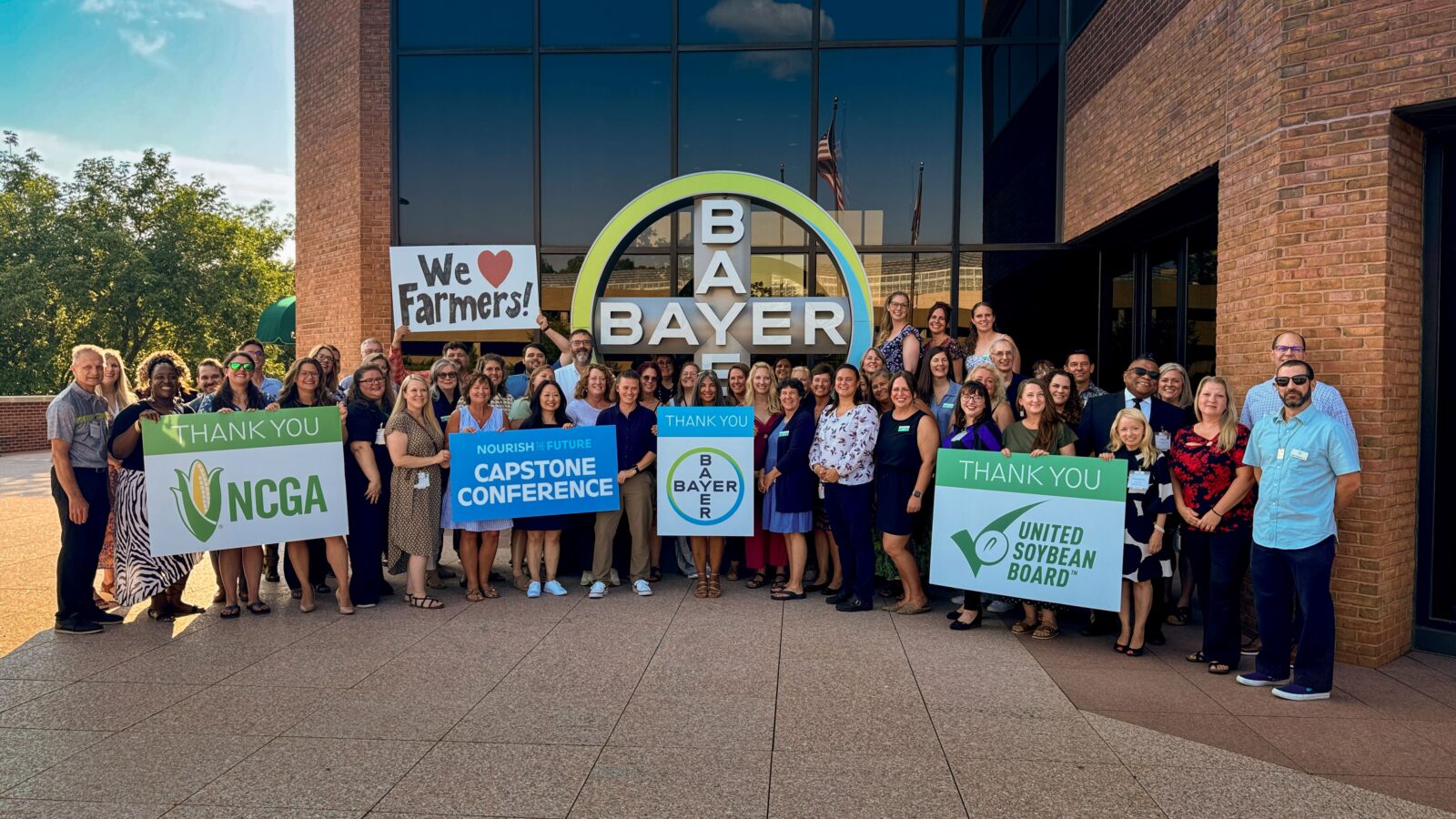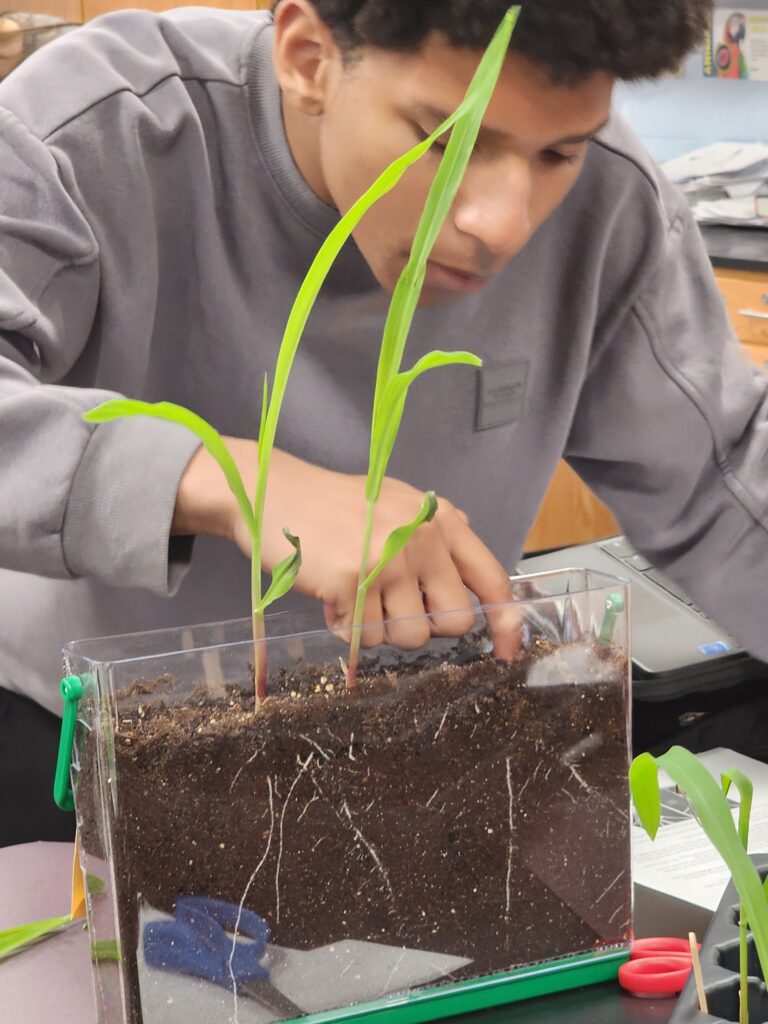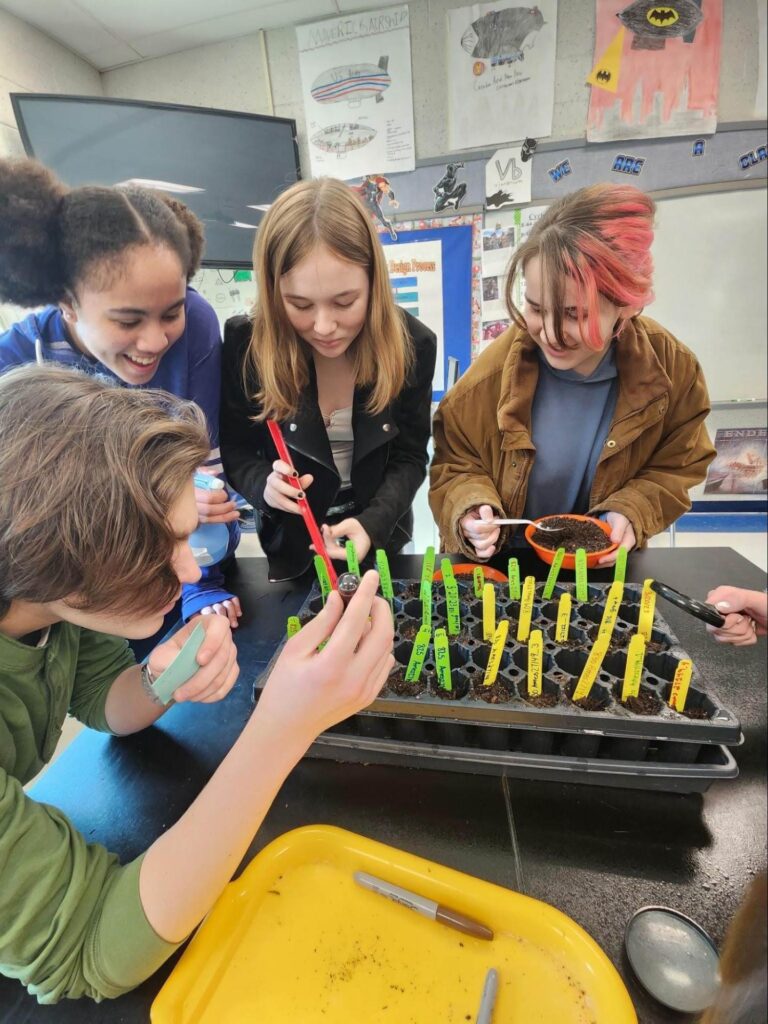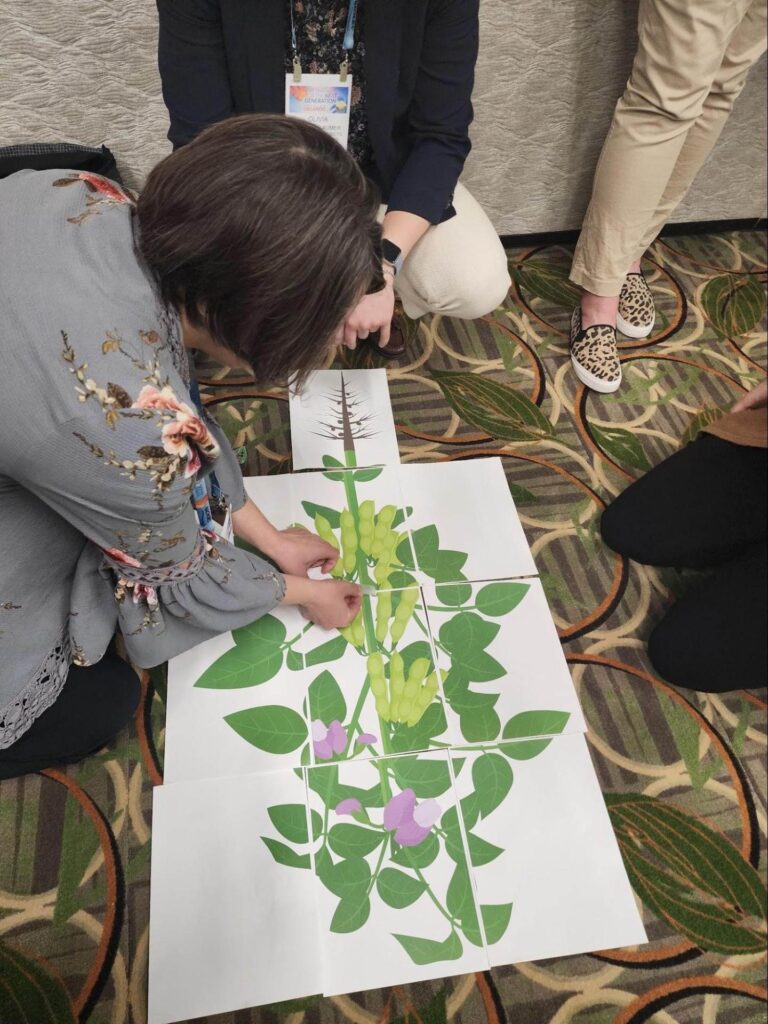Believe it or not, agriculture is a high-tech industry.
Genetics, biochemicals, prescription agronomics, precision equipment and many other elements of agriculture rely on innovative science and technology. As local and global demand for food security increases, the need for agriculture to continue delivering sustainable products is growing, as well.
With that comes the need for talented people to fill high-tech jobs in agriculture — including some that don’t exist yet.
U.S. Soy is looking ahead to address this challenge through investing soy checkoff funds in Nourish the Future, an education initiative developed by science teachers for science teachers. It provides free science curriculum and training created by middle school and high school science teachers for their peers. These lessons, connected to the Next Generation Science Standards, allow them to use agriculture to teach science.
Prior to their involvement, many of those teachers didn’t realize agriculture is a high-tech industry.
“My first connection to agriculture was through a program focused on beef production,” says Jessica Kurtz, who has taught both middle and high school science in Toms River, New Jersey. “The science I saw on the farm just blew me away, and it sparked my curiosity.”
Then, she was putting together a summer program on osprey and ecology with a colleague, who had just completed the Nourish the Future Teacher Leader Community program.
“She wanted to incorporate water testing, soil testing and all these other wonderful lesson ideas she learned,” Kurtz explains. “She had found Nourish the Future through another colleague. You can see the ripple effect of a phenomenal program the teachers they are training.”
That connection has changed how she teaches science to students growing up along the Jersey Shore.
“As the global population grows, we will need to raise more food with less space,” she says. “I want to teach my students that food sustainability matters. How can the upcoming generation be part of solving these challenges if they don’t know there’s a need?”
Adding Agriculture to Science Curriculum
When Kurtz first connected with Nourish the Future during the 2022-23 school year, she was teaching middle school science. Agriculture and food had no place in her curriculum.
“I was familiar with agriculture because my parents had worked on farms, but it didn’t occur to me to bring it into the classroom,” she says. “We live in the Garden State. Our students should know more about food than that it comes from the grocery store.”
She participated in the Nourish the Future Teacher Leader Community program, brushing shoulders with farmers and learning more about science in agriculture. As part of the program, she developed lesson plans to share with other teachers. The following year, she participated again as a coach, supporting other teachers as they explored the agriculture industry and developed their own lesson plans to share.
During the 2023-24 school year, Kurtz started teaching at the STEAM Academy within Toms River High School East, teaching STEAM biology. STEAM education is an approach that uses science, technology, engineering, the arts and math to guide students in learning and discovery. For the 2024-25 school year, she has added an AP research class for seniors to her schedule.
“Nourish the Future has a ton of curriculum, and I use many lessons that I plug in where they fit,” she says. “I now run labs where we study how plants grow and connect that to sustainably raising food.”
Her classes now participate in a global study through the Donald Danforth Plant Science Center in St. Louis, Missouri. She receives specific corn hybrids from the study and challenges her students how to care for their corn plants, providing nutrients, water and light. They measure leaf angle to determine how plants can use as little space as possible while still being able to produce a crop. They submit their findings to the global project.
“Developing a soybean unit is next on my list to incorporate into my curriculum,” Kurtz says. “I want to come up with a project focused on soybeans that provides a similar experience for my students.”
She also promotes the use of agriculture in science class to fellow teachers in her district and throughout her state.
Experiencing Crop Production Technology
Kurtz pursued opportunities through Nourish the Future because she connected with the program leadership and staff. They helped her to connect with farmers.
To experience the agriculture industry, Kurtz met farmers and many others at Commodity Classic, an industry conference and tradeshow for farmers raising soybeans, corn, sorghum and wheat. She also participated in farm tours, similar to those connected to teacher workshops.
“I get farmers now,” she says. “As a teacher, it’s not a job, it’s a passion. It’s part of who I am. I learned that’s how farmers are. I get their dedication, and that farming is an extension of who they are. There are not many careers where I see that.”
She hopes to encourage students to consider pursuing careers in the industry. Her personal experience through Nourish the Future helps her better explain the potential to her students.
For example, as a part of the Teacher Leader Community program, she visited Bayer Crop Science to see agricultural science in action.
“We went into their labs and enjoyed the speakers,” Kurtz says. “Their research efforts are the things we do in the classroom.”
Thanks to this experience and her continuing education through Nourish the Future, her message to students is clear.
“American farmers are feeding the world, and I want to make sure that keeps happening,” she says. “How can we train students to engineer and design the future technology for agriculture if they don’t know what it is or how they are connected to it? I want to send out students who realize the importance of this industry and want to help. Making my students aware of the challenges and opportunities is a BIG part of the solution for food sustainability.”




